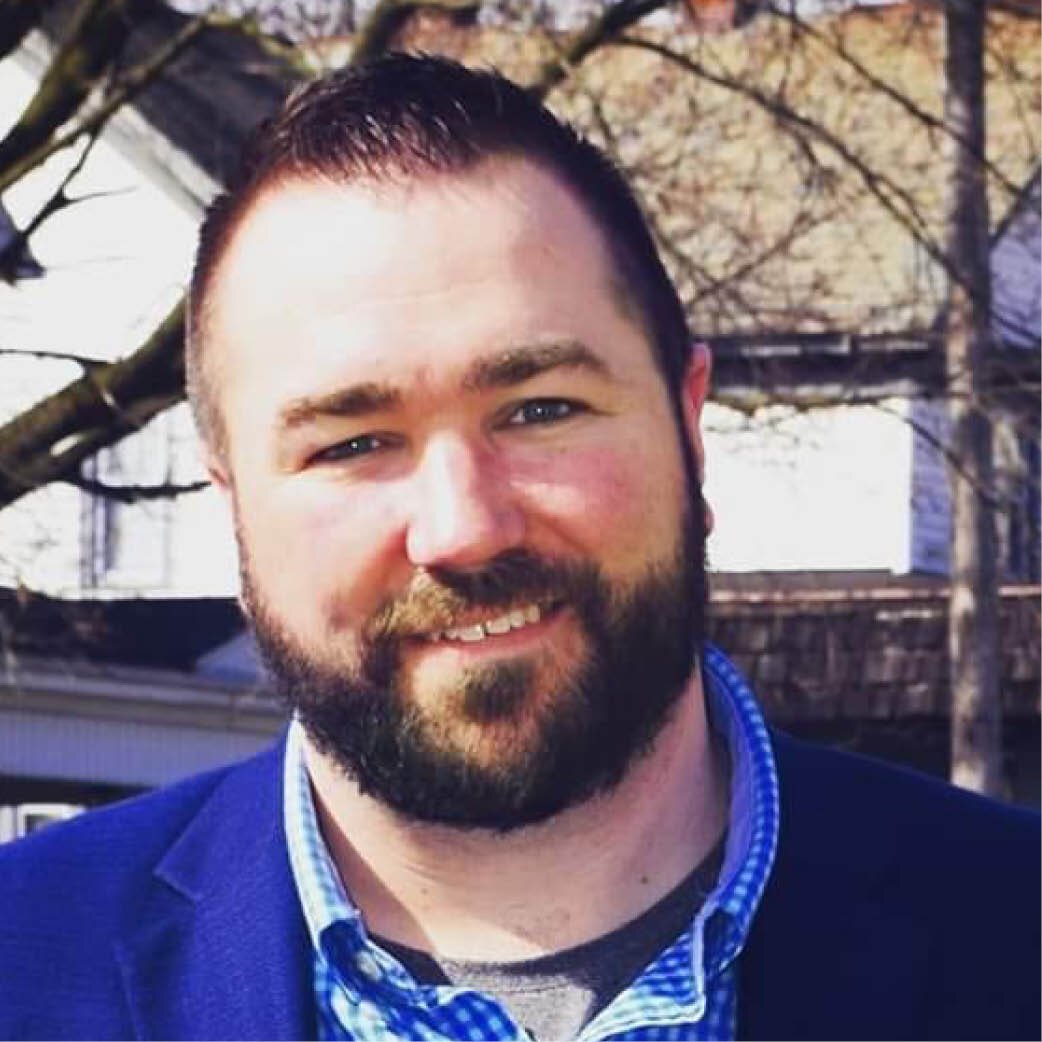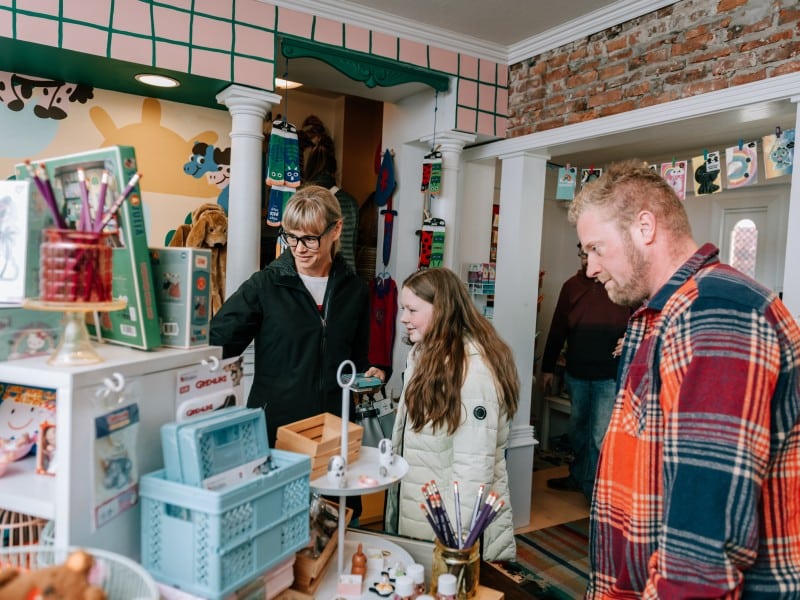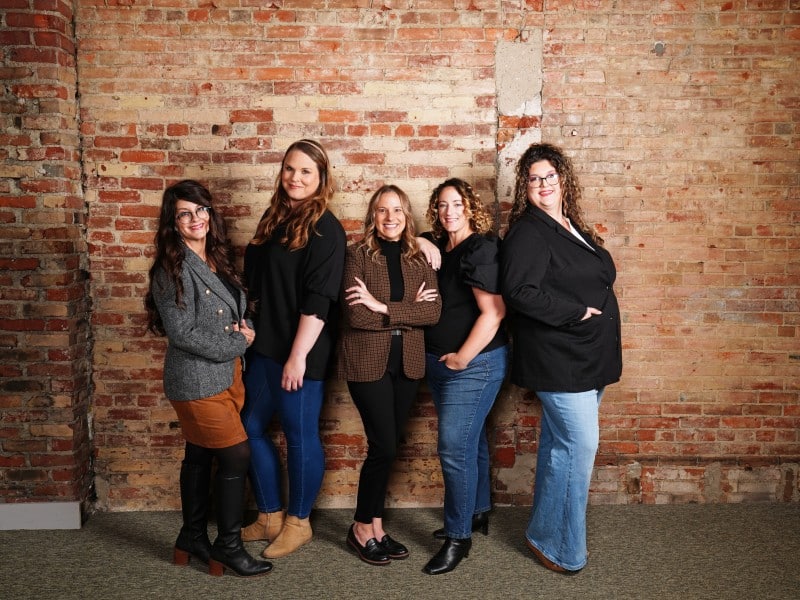Connection

When we invest in a place — either our home, a business, or a neighborhood — we do so at the risk of betting on the strength of that community’s economic and social fabric. This investment is a bet on a community’s ability to use capital to attract more resources, recognize opportunities, and produce value, so our investment will remain sound. While these are admirable attributes a place can provide, it requires the attention, cohesion, and collective determination of the community to ensure that the existing fabric can absorb more capital. The old saying “if you build it, they will come” from Kevin Costner and a 1989 box office hit is an oversimplification of how community development works.

A place can either be thriving and vibrant or empty and grey. When communities improve the ability to use capital effectively, to transform their surroundings, they build physically and emotionally better places — more street life, stronger neighborhoods, and an increased sense of belonging. It is how we are connected to a place that determines the outcome, and that connection has become more important than ever after the year that was 2020. One may ask, why is connection so critical to the future of Fort Wayne? A connection is forming social and strategic ligaments that bind neighborhoods together, allowing capital to be effectively transformed and strengthening the community fabric. It requires more than an initiative or two; you simply cannot obtain this by building a new school or repaving a street. While physical investments help, connection requires social awareness and cooperation between residents, leaders, and businesses who work together, share information, take collective action, form networks, and invest in their place. In a diverging world in ideology and thought, a connection may be the most crucial investment we can make.
Social Capital and Connection
The basic idea of social capital is that networks, where they exist, provide value, and it is in the connection among individuals where reciprocity and trust in one another arise. In his magnum opus, Bowling Alone: The Collapse and Revival of the American Community, Robert Putnam addresses the idea of social capital and its role in community building. He notes, “What really matters from social capital and civic engagement is not merely nominal membership, but active and involved membership.”[1] Putnam’s ideas regarding the fraying of connections have garnered some criticism, but it remains hard to argue that social capital is irrelevant to a community’s strength. He identifies multiple ways in which neighborhoods can build upon existing social capital, including the idea that problems are easier to solve when there is less opposition and more connection between neighbors, which results in safer streets and improved social environments. Besides, our awareness of how we are connected to one another improves our social and democratic institutions’ quality. He finally posits that social capital is responsible for our health and well-being because social connection requires human contact. As social creatures, happiness is expressed both psychologically and biologically.
In the must-read book entitled Why the Garden Club Couldn’t Save Youngstown, author Sean Safford, who builds his thesis on Putnam’s findings, shares that connections born through social capital are critical to helping a community navigate change and uncertainty. As we all have discovered in 2020, certainty is never a given. Safford shares that when both Youngstown and Allentown faced economic upheaval in the 1970s and 80s, the city’s social networks were the critical component to revitalization. In Youngstown, stakeholders from various businesses not related to the steel industry and neighborhood groups were not invited to the table to steer the community through loss. The constituency that held many pieces together began to fall apart by creating their own visions of what could become. In Allentown, social capital played center stage as old social and economic power structures collapsed, and alternative organizations arose to bridge the gaps and create a more diversely organized community. In his conclusion, Safford argues that the first responsibility of those in power in any crisis is to address basic survival first. Subsequently, attention must turn to sociological questions such as how identities and interests will sort themselves out. Policies should target strengthening the bridging of networks and reducing conflict.[2] While this essay is not comparing Fort Wayne to Youngstown, it is crucial to recognize the role social capital plays in the revival of a city’s growth and, more importantly, her sustainability over time.
The Importance of Social Connection
At the outset of quarantine, when the world changed in a matter of days and many Americans found new ways of working and educating, there was sudden importance placed on connections and place. While not all families could work remotely, many had to ask where there were ample places for their children to play while going to school online. Was the street to the park safe, and were there friendly neighbors who had children the same age? Self-isolation required new technologies to be introduced in the home. Many extended lunch breaks between Zoom meetings were spent exploring the streets and alleys of the neighborhood that often were relegated to the landscape of their rearview mirror. For a short while, Fort Wayne residents gathered at the end of their driveways with their grill cooking hot dogs and burgers for neighbors or sitting on the front porch keeping an eye on the neighborhood as spring turned into summer. In late March, the city promoted a nightly event that citizens could enjoy from their front yard by inviting everyone to wave to their neighbors, a story that made national news within twenty-four hours.[3] In the blink of an eye, there was greater importance placed on the neighborhood and existing connections. Social interactions and familiar neighborhood landmarks became sources of comfort and security for residents. Forrest and Kearns argue that “the neighborhood itself becomes an extension of the home for social purposes and hence extremely important in identity terms.”[4] Instead of separating home and office, they molded into one, and the neighborhoods we all lived in became characters in our daily Instagram story updates, assuring friends and family we were fine in the new normal.
When a connection is not apparent, dire consequences in the form of isolation can cause health concerns, a topic that has been taken for granted until recently. Dr. Vivek Murthy, the Surgeon General of the United States, recently published several years’ worth of work highlighting research showing that isolation is not a part of our human experience. Murthy notes, “humans have survived as a species, not because we have physical advantages like size, strength, or speed, but because of our ability to connect in social groups, exchange ideas, coordinate goals, and share emotions.” When this connection does not exist, increased isolation creates adverse effects on an individual’s health, well-being, and the greater community. One study found that loneliness can be as damaging to a person’s health as smoking 15 cigarettes a day, a problem that is especially relevant in our communities that are aging.[5] A 2018 study from AARP of adults 45 and over found that the top predictor of loneliness is the size and diversity of an individual’s social network.[6] That same year, UK Prime Minister Teresa May created the first cross-governmental strategy to tackle the impacts of loneliness, citing that general practitioners in the nation are seeing between one and five people a day suffering from such, “which is linked to a range of damaging health impacts, like heart disease, strokes and Alzheimer’s disease.” Research has found that improved social capital in an individual’s life is created through positive relationships, including: a sense of community, which is a crucial assessment positively associated with individual well-being;[7] perceived social cohesion for young families with children;[8] increased trust and participation through bridging social capital,[9] and frequent interaction with neighbors, which are associated with higher assessments of personal well-being.[10] While these may seem overly simplistic, the benefits of neighborhood connections as a tool to combat loneliness is critical to improved life chances for residents.
Connection is Possible
The good news is that there are a few solutions to ensure residents of Fort Wayne can have access to create the connections desired. One of the most notable is the creation of “Third Places,” a phrase coined by sociologist Ray Oldenberg. A third place is a physical location where people spend time between home (first place) and work (second place). These are places where people connect, exchange ideas, build relationships, and have a good time. Some have referred to third places as the “living room of society.” Sociologist Eric Klinenberg, who wrote Heat Wave and Palaces for the People, agrees with the importance of such places for the health and vitality of a community and goes on to re-define much of this as “social infrastructure.” These places include libraries, schools, playgrounds, parks, pools, sidewalks, plazas, community gardens, and other public spaces that bring people together. Social infrastructure or third places themselves are not social capital, but they are the physical infrastructure (buildings and public spaces) necessary to assist social capital in developing. By investing in and ensuring third places are accessible to all residents, we can strengthen social networks, critical to building healthy neighborhoods, and strong connections for a sustainable Fort Wayne.
Another possible solution to ensuring connection continues to thrive is through research and understanding. Fort Wayne is in a great position to foster the social well-being of neighborhoods and residents through the continued use of planning, policy, and community development. Taking the time and effort to map the city’s social and human capital and measure how they are connected to one another can be critical to ensuring the fabric can absorb new capital, build assets, and make changes easier to navigate. With the knowledge that social capital can be crucial to public health and well-being, building such a research strategy could be an essential way to help the community thrive and address past harms, while building a more equitable, resilient Fort Wayne. We cannot expect residents to form social capital until we understand where connections in the community exist. Only then, when people can attune to and feel the connection, are they more inclined to participate in actions that help improve their surroundings. This inclination can manifest through volunteering, neighborhood pride, and being engaged through civic dialogue and debate. Social connection is known to increase neighborhood safety, provide support, and strengthen resilience.[11] Investing in ways to build connections throughout Fort Wayne’s many neighborhoods may be the most critical strategy we can employ to strengthen those neighborhoods and improve the lives of residents.
This essay is part of a citizen-led book project in Fort Wayne called FORTHCOMING: Considering the Future State of Our City. To learn more and read additional essays, visit the Foreword and Preface.
Dan Baisden is the City of Fort Wayne Administrator of Neighborhood Planning and Activation. Growing up in the ‘Rust Belt’ of Eastern Ohio, he first discovered his passion for community development after reading Jane Jacobs Life and Death of Great American Cities as a sophomore in high school. After graduation, he moved across the country leading and managing radio stations for nearly fifteen years before relocating to Fort Wayne in the early 2010’s. He changed careers, obtaining degrees in Urban Planning and Urban Sociology from Arizona State University and soon will have his graduate degree in Community Development from Pennsylvania State University. After moving to Fort Wayne, he was named an Edison Research 30 Under 30, a Fort Wayne Business 40 Under 40, serves as the chair of Congress of the New Urbanism Midwest Chapter and is a board member for Northeast Indiana Public Radio. Dan has completed multiple research projects on urban neighborhoods and the sociology of communities in decline. He is passionate about building vibrant, healthy and resilient neighborhoods and communities across the Midwest.










